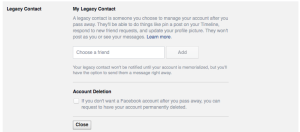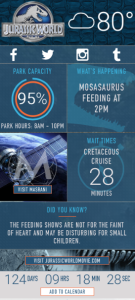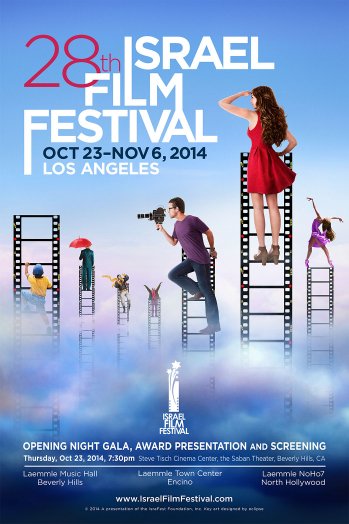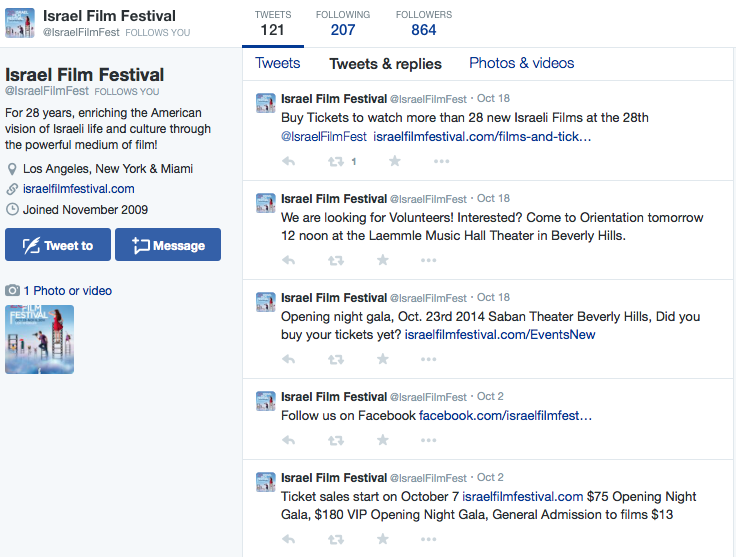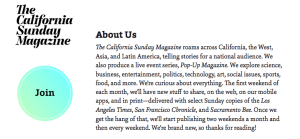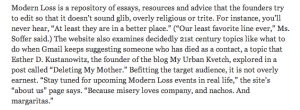Big Ideas

Facebook’s “Legacy Contact” Option
0“When I met you it was love at first sight — you know me inside and out, and I trust you like no other. Won’t you be my Facebook legacy contact?”
— Valentine’s Day cards of the future (an @EstherK prediction)
Since my mother died in May 2011, I’ve written extensively (including on Modern Loss) about the digital footprints that our loved ones leave behind. These legacies can be painful or funny, or sometimes both. Over the past few years, Facebook has offered “a basic memorialized account which was viewable, but could not be managed by anyone.” Many never transitioned the pages of the dearly departed into any kind of internet Valhalla, because it’s just too final, or sometimes, because we didn’t know how.
But right before Valentine’s Day this year, the tidings arrived from the Facebook newsroom — now people can treat the content they’ve created in their digital lifetime as a legacy, and designate an appropriate guardian for that legacy. Introducing the “Legacy Contact”:
[…] people choose a legacy contact — a family member or friend who can manage their account when they pass away. Once someone lets us know that a person has passed away, we will memorialize the account and the legacy contact will be able to:
1) Write a post to display at the top of the memorialized Timeline (for example, to announce a memorial service or share a special message)
2) Respond to new friend requests from family members and friends who were not yet connected on Facebook
3) Update the profile picture and cover photo
If someone chooses, they may give their legacy contact permission to download an archive of the photos, posts and profile information they shared on Facebook.
Other settings will remain the same as before the account was memorialized. The legacy contact will not be able to log in as the person who passed away or see that person’s private messages. Alternatively, people can let us know if they’d prefer to have their Facebook account permanently deleted after death.
When I saw this, I gasped with a combination of glee and horror. Leaving aside that last spine-chilling last sentence — “permanently deleted after death” — as a social media consultant and writer who is very active in the social web, this was an acknowledgment that what we’re doing in the Facebook space goes beyond sharing weird memes, incendiary articles and photos of the same kittens or babies in slightly different positions. And our digital footprint — here, specifically on Facebook — can continue to create impact even after we’re gone.
But how do you select someone to manage the (potentially) thousands of posts you may have made over Facebook in your lifetime? The people who know the medium best might be the best suited to the task, but those people may not be your relatives or your dearest friends. Do you choose someone with the skills to manage content or with the emotional commitment and capacity to tend to that online space forever more? Is it too much to hope for both in one trustworthy human package? Finding a life partner is hard enough…now you have to find an additional Mr. or Ms. Right to partner with you even after your life? (Someday, there’ll be an app for that.)
Has the race to be the designated legacy contact begun? Is this going to be a new source of business for social media consultants (“we’ll manage your web presence while you’re alive, and maintain it after you’re gone”)? Will it be a source of contention in families the way inheritance of physical assets is, or will it turn into a game of “not-it”? (Feeling particularly sorry in advance for whoever I select as my legacy contact, and apologizing to you all in advance in case you’re sixty years in the future, reading this after I’m gone because I’ve selected you.) And what happens to my content when my designated legacy contact dies? Does their legacy contact inherit the burden/responsibility/petri dish of managing my online content, or does my content go to the next person in a succession order that I’ll designate in my internet last will and testament?
Whatever legal, logistical or emotional questions are involved, Facebook is acknowledging that the content we create in the digital space is uniquely ours, and that when we pass on from this planet, we leave these assets behind. While not as important as a finding cure for cancer or parenting a child who might one day bring peace and healing to the world (here’s hoping), content makes an impact and leaves a legacy — and as we take responsibility for selecting an executor for our will or a guardian for the things that mean the most to us, it makes complete sense to designate a trustworthy representative who will treat your online assets with care and respect.
And so my search begins. ☺
(A version of this post appeared on Medium.)

Jurassic World: The Transmedia Story Begins
1If you watched the Super Bowl, you probably already saw the ad for Jurassic World, the next sure-to-be-a-blockbuster summer movie in a franchise that continues to ask the question, “if we rebuilt the park AGAIN…would it still be a disaster?” and adds the question, “if we created an even deadlier dinosaur than a T-Rex…would that create a safe theme park environment?” While I’m guessing the answer are “yes” and “no,” respectively, from the minute I hear the John Williams score, I’m on board.
But if you’re on the electrified paddock fence about contributing your movie ticket’s cost to creating a blockbuster, Jurassic World wants you: you might not be interested in another dino-disaster flick, but could they interest you in a relaxing trip to the Hilton Isla Nublar, to enjoy the family attractions of their theme park?
Of course, Isla Nublar isn’t a real place. But that hasn’t stopped Jurassic World from launching the story of the film – which isn’t out for another 4 months – through an impressively-detailed website that mimics the life and offerings of a real-life theme park. The site features restaurant menus at the park’s dining establishments, educational materials about the dinosaurs that visitors will encounter, and “live-cam” footage from the park. If you’re really looking for it can you find the link, in tiny print, that says “visit jurassicworldmovie.com.” And if you try to “book” one of their packages – which come in Standard, Family, Adrenaline, Romance and others, each built-out and better-programmed than some conferences I’ve been to – you will get re-routed to Fandango. Otherwise, you can go about your business fantasizing about your luxurious fake-cation.
Jurassic World is creating its narrative’s world through transmedia – creating content across multiple media, in support of a story that will exist or already does exist somewhere else (at least that’s my layperson’s explanation; see here for something “more official“).
Transmedia extends the story and enables more personalized access to the narrative than a one-directional film aimed at an audience in a darkened theater could, and expands the reach of that story using different tools in the storytelling toolkit. Whether it’s webisodes that tell you more about minor characters or deepen historical backstory for a TV show or a peek inside the diary or blog of a character who’s always depicted as scribbling in a notebook, transmedia is a reward for fans who want to know more and a tool to deepen their relationship to the show. It’s like backchannel chatter among those in the know. Sharing information can be a powerful thing that builds trust and investment, creating a proud cohort of evangelists who can represent your brand even when you’re on your lunch break.
It’s become trendy to talk about “storytelling” when it comes to branding. But the word “story” itself doesn’t mean what it classically used to. Now there’s the all-access story, the story-behind-the-story, the context for the story, the story-after-the-story.
The JurassicWorld.com website may still not convince you to see Jurassic World, the movie. But if it convinces you of one thing, let it persuade you to accept that people are learning to expect a narrative that is dynamic, expanding beyond its initially perceived limits. And the most successful brands and organizations will spend the time, creativity and money to build out the universe around the main story in a way that supports their core message, whether it’s donations or dinosaurs.

Client Profile: Comedy for a Change Conference
0Comedy as social change? Only in Jerusalem. 🙂 December 21-22 saw the arrival of a group of comedy change-makers from around the world for the premiere Comedy for a Change conference. Originally signed up as an attendee, I was honored that they subsequently hired me as social media manager for the conference – I created and managed the @JJJComedy Twitter for the three weeks before the conference, during the event itself, and for several weeks after.
The brainchild of comedy writer and exporter of Israeli TV formats Omri Marcus, the conference brought to Israel people who had never been there before, to experience different styles of comedy, examine how comedy informs the social and political perspectives, and to participate in an international writers room.
As the social media manager for the conference, I watched the tweets fly fast and furious throughout the day, documenting the unique proceedings as they transpired. The mayor of Jerusalem was interviewed by a foul mouthed puppet (think Avenue Q, but ruder). Participants were treated to an inside scoop of from the writers of the German, American, and Israeli versions of the hit show, “The Office.” Two Canadian comedians talked about their Yiddish-language comedy series, YidLife Crisis. The head of television programs for the BBC spoke about his network, Israel in the news, and the changing face of anti-Semitism in Europe. Session panelists talked about pushing the envelope, the process of producing video, and how social change messages can be embedded in comedic contexts.
The United States, of course, was well-represented. Other comedy professionals hailed from countries as far away as Sweden, Denmark, Hungary, South Africa and Canada; there were also two Muslim comics (from Denmark and Brooklyn), who were a vital component to the “Non-Diplomatic Peace Talks” session (covered by CNN), an experience pairing them with two Israeli political comedians and moderated by a German. (If you pause at 2:00 in the clip, you can spy me in the audience, smiling demurely and looking down at my notebook.)
Check out a sampling of the Tweets and photos from the conference, as rendered through Storify:

Hacking Your Own Identity
0 We’re all guilty of it, from time to time, trading in rumors, snark and jokes at the expense of others, especially when we think no one’s watching. The fact is, like in Terry Benedict’s casino in Ocean’s 11, on the internet, there’s always someone watching.
We’re all guilty of it, from time to time, trading in rumors, snark and jokes at the expense of others, especially when we think no one’s watching. The fact is, like in Terry Benedict’s casino in Ocean’s 11, on the internet, there’s always someone watching.
Recently, Sony’s Scott Rudin and Amy Pascal found this out firsthand during the massive hack of Sony Pictures, as several of the communications they thought would remain between them went public in a major way, along with thousands of other leaked internal documents. Snarking about colleagues is nothing new; we’ve all been on this e-mail chains with people trying to out joke each other as they poke and prod at the people in power. But in Rudin & Pascal’s case, one of those people in power was the President, and the content was “racially tinged,” as the New York Times put it.
Post-hack, Rudin and Pascal both released statements. Rudin’s read, in part:
“[…] private emails between friends and colleagues written in haste and without much thought or sensitivity, even when the content of them is meant to be in jest, can result in offense where none was intended.”
In addition to the discussion on what constitutes professional behavior in the entertainment industry, and identifying the considerable role that gossip plays, the hack also launched a conversation among journalists about how to handle information resulting from the hack. Several journalists were concerned that the “information” had actually less of a “the public has a right to know” caliber than a salacious “yep, we knew that people in Hollywood talked behind each others’ backs” quality to them – that distinction was the difference for many between feeling obliged to use the information and feeling that using the information would be both gossip and a validation for the hackers’ methods.
There are certain things that are out of our control, especially in this wild world of internet transparency, with endless space in the cloud – wherever that is – to record our most inane or insane moments. But the space between the character we display in our public moments and the way we conduct ourselves online seems to be widening. While we may not be inclined to cease joking about people in power, be they presidents or supervisors or Angelina Jolie or Kevin Hart or parents or siblings, those of us who care about being consistent in our character might want to take an extra look at that email before it’s sent, or that blog post before it’s published, or that Tweet before it’s tweeted.
Are we the people we are in our face-to-face interactions, or are we the people we are in our private communications, when we think no one else is watching? And when we pause before posting, we should think for an extra minute or two (or 60) – is this a statement we want to be associated with our name, not just in a private email but in public?
In other words, let’s hack our own identities – both online and off – to more fully understand how our private correspondence connects to who we are as we walk through the world, both professionally and personally.

Social Media Case Study: Unsolicited Advice for the Israel Film Festival
0When I lived in New York, one of the focal points of my entertainment year was the Israel Film Festival. My friends and I, pre-Hulu, pre-Netflix, pre-much-of-anything-other-than-mainstream-modes-of-entertainment, eagerly anticipated the annual display of Jewiness-on-film meets Zionism, the Jewish geography and Hebrew immersion experience that was the Festival. We all knew when the Festival was happening, where it was happening and what was playing. I remember that most of the shows were sold out well in advance, because of the collective New York Israel-loving-and-missing community, many of us in our twenties. We planned outings, doing dinner or drinks first at a local bar or on several occasions, sinking into New York cliche with frozen hot chocolate at Serendipity, which had the convenience of being nearby the theater.
And all of that was before social media.
Since I moved to LA, I’ve either been out of town for the IFF (my fault, but usually because I’m in Israel), or have been in town but have been unaware that it’s happening. This doesn’t seem possible, as I spend most of the day online and connected to the Jewish world. I follow the IFF on Twitter, and subscribe to their FB page, as well as email blasts from the Jewish Journal and the IAC. This year, one of my friends posted about it on Facebook. But if not for that, I might have woken up someday next week and learned that I had missed it yet again.
Theoretically, in this age of hyper-connectivity, I should have been overwhelmed with communications regarding the IFF, both in advance and once it was underway. So why wasn’t I? Part of the problem is that communications are overwhelming generally – since I rarely pick up a copy of the Jewish Journal and read only selected articles online, it’s not the mainstream media that’s the problem as much as it is the evolving way we consume that information. And it might be, in part, because their social media presence is so minimal and they are failing to mobilize the audience (and their sponsors) as brand ambassadors and PR agents.
Because Facebook is an inexplicable mystery when it comes to assessing the potential for organic reach without advertising (and because they should be advertising to LA Jews and don’t seem to be), let’s take a look at the Twitter account for @israelfilmfest.
Their account, since November 2009, has tweeted 121 times. They have under 1000 followers. Most of the “people” they’re “following” on Twitter aren’t people at all: they’re other Film Festivals (who are not likely to share, retweet or publicize the IFF’s efforts) and organizations (some partners, who should be sharing/retweeting/publicizing, but don’t seem to be). And – most disturbingly – only have tweeted 5 times in the month of October, precisely when tweets should have been, if not fast and furious, then laden with information, tempting offers and tidbits about the festival’s films. The website links to a few pieces about the Festival, but imagine the reach of those pieces expanded by social media…
This advice is unsolicited. But because I love the Festival, I’m sharing some tips about how to do it better next year (or at the other two outings of the festival, upcoming in Miami and New York….but don’t ask me when those are or were, since that info doesn’t seem to be on the IFF website).
1. Use your assets in promoting the festival. The filmmakers. The content of their work. Their actors. People in LA who are Israeli or support Israeli culture. Local kosher/Israeli establishments. Festival partners. Organizations who aren’t financial sponsors, but could be content partners. And the organizers should have shot wide in terms of the angles that could be explored for coverage. For instance:
- People who are in the know about Israeli music get giddy at the fact that Meir Fenigstein founded and runs the Festival, it’s like being in the same room with one of the Beatles. Why isn’t there an article about Poogy/Kaveret, or about the music of Israeli films?
- Fenigstein told a story at the screening of “The Go-Go Boys” about Menahem Golan’s role in suggesting and sponsoring the first IFF. Why wasn’t that a first-person piece (or an interview) in the Jewish Journal, Variety, THR, The Writer’s Guild, the Academy of Motion Picture Arts & Sciences, or EW?
- Cannon Films, the Golan/Globus production company that became huge in the 80s and is the focus of The Go-Go Boys,” producing Death Wish, Bloodsport & Breakin’, must have inspired dozens of filmmakers (in addition to Eli Roth, who is featured in the film). Maybe pitch Quentin Tarantino on writing something about his favorite Cannon Films outing, or invite Eli Roth to introduce the film at the Festival? (They may have, but these are the types of ideas I mea when I say “shooting wide…” in regard to PR.)
2. Enhance your social media presence. Ideally, hire someone (or designate a web-savvy volunteer) to coordinate a multi prong social media approach, including (at minimum) Facebook, Twitter & Instagram. But I know sometimes Jewish nonprofits can’t allocate those funds, in which case less ideal but still a plan, hire a consultant to create a plan for you to implement before during and after the festival. And that’s #3…
3. Create a content plan, including a commitment to Tweeting regularly leading up to and during the festival. In addition to varying the types of content posted (trivia, Q&A about the festival or its films, short video clips, shoutouts to filmmakers, links to purchase etc), this content plan should also clearly identify the goals of each week’s social media outreach. Which week will be primarily about promotion and identifying potential partners/sponsors? Which week will be about getting people in the seats? Which week will be about celebrating the people who come and the energy on-site? (That there are NO PHOTOS on the Photos tab on the website as of November 2 – a week into the festival with almost a week to go – is not a good sign.)
Keeping Twitter current and active on its own (or even using magical Facbeook advertising) isn’t necessarily going to sell out the festival. But today, there are so many (free or mostly free) tools that are available – why not use them?
(If the folks at the IFF want help with this next year, they can feel free to be in touch. I’ll give them a decent rate, I promise. :))
Want more posts like this one? Consider joining my new mailing list. No spam, no overwhelming emails, just the occasional conversation starter/act of self-promotion. 🙂 Sign up here…

God, Prayer & No Traffic from San Diego to Los Angeles
0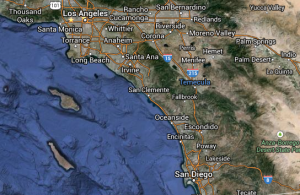 I’d love for this to be an instructional story about how to effectively request and obtain Divine intervention that yields a traffic-free journey between cities in Southern California. It’s not. But the trip between San Diego and Los Angeles did provide me with a fascinating experience of gratitude that wasn’t quite prayer, and yet, wasn’t NOT prayer. As it happened, I knew I had to write about it.
I’d love for this to be an instructional story about how to effectively request and obtain Divine intervention that yields a traffic-free journey between cities in Southern California. It’s not. But the trip between San Diego and Los Angeles did provide me with a fascinating experience of gratitude that wasn’t quite prayer, and yet, wasn’t NOT prayer. As it happened, I knew I had to write about it.
Luckily, one of my clients, ELI Talks (who is hosting FREE live, TED-style talks in NYC next week – see this link for all details and registration info), provided the inspiration with an online conversation on God that had me asking some questions about prayers and where they go, once uttered.
The result of that process of questioning is this piece, “Got God? Thoughts on God from a Sometimes-Theist,” which appeared in eJewishPhilanthropy this past Tuesday.
An excerpt:
Driving back from a social media training in San Diego to Los Angeles before the High Holidays, I felt something move through me. I turned down the radio and began to speak words aloud. “I am grateful,” I began, adding simple phrases until they became sentences of gratitude. Spontaneous, uncomplicated gratitude, so large that I had to speak it aloud even with no audience to listen and applaud, hadn’t happened to me a lot in my life. It sounded like prayer, albeit (my inner writer scolded) a not-so liturgically or poetically-compelling one.
But who was I talking to? God? My ancestors? A muse? Or, as many say in California, “the energy of the universe”? It felt like I had written an important letter, but had failed to address the envelope, or was sending to an email address that had been discontinued. Who would even hear this expression of thanks, this gratitude for things ranging from family to the completely appreciated lightness of traffic, from the laughter I received during my presentation to feeling the sunshine on my arm as I drove? Where was God? And did it matter? Or was it important to express the gratitude regardless of whether or not it was directed at anyone (or Anyone)?
Read the entire piece at eJewishPhilanthropy.com. And as always, please feel free to share any feedback…

March Madness: Recent Clips
0This week was simply mad – a personal essay in the JTA (commonly known as the AP of the Jewish world) about loss, focusing on a ring that was my mother’s; I attended my lovely and moving good-bye party at work; a new part-time job came together which enables me to shift into new styles of writing (more to come on that later); and over this weekend, was mentioned in an article in the New York Times about the Modern Loss site, to which I had contributed a piece titled “Deleting My Mother.” (As an extra bonus moment of glee, the Times referred to me as “founder of the blog My Urban Kvetch,” a mention I never would have imagined when I founded it ten years ago.)
Earlier in March, I read a piece about improv inspiring creativity at Jewish nonprofits, and decided to take it one step further with this piece, “Yes-And’ing Our Way to Organizational Progress.”
This past weekend was also the Jewish holiday of Purim, which is typically marked by celebration and comedic performances, including something called a “Purim shpiel” – generally this highlights the story of Purim in some way, but the spiritual community known as IKAR treats the “shpiel” time as an opportunity to lampoon the community itself. This is my second year on the writing team for the Shpiel, and one of my two contributions was a parody of pharmaceutical commercials, but treating IKAR itself as the drug. (The other one, a Yiddish-inflected parody of “Roar,” by Katy Perry, isn’t posted yet.) There’s a lot of inside comedy, but I think it still plays to others. Check it out!

Video Workshop: “Leadership in the Digital Age”
0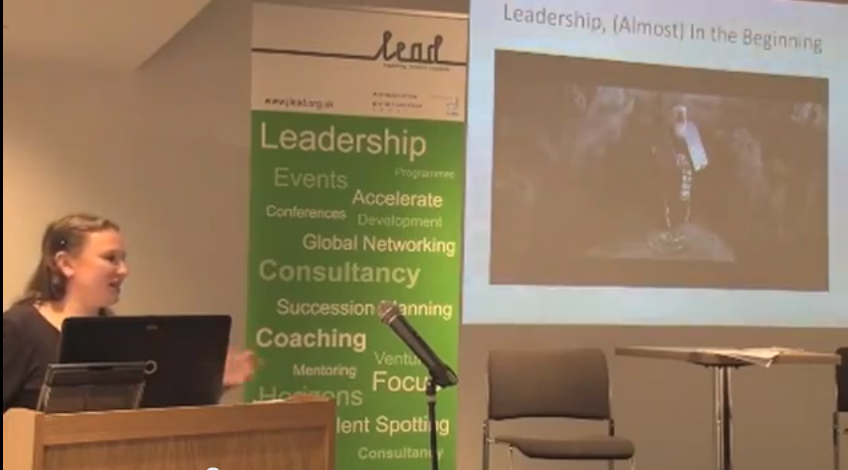 In May, I was invited to London to speak as part of the Jewish Leadership Council’s Lead Division’s newest initiative, Leading In which was created in response to the desire and need for more leadership skills training, expressed by alumni of Lead’s programmes as well as employers within the community. The JLC, in a blog post about the program, explained:
In May, I was invited to London to speak as part of the Jewish Leadership Council’s Lead Division’s newest initiative, Leading In which was created in response to the desire and need for more leadership skills training, expressed by alumni of Lead’s programmes as well as employers within the community. The JLC, in a blog post about the program, explained:
We believe that Jewish communal leaders need both a deep understanding and knowledge of the UK Jewish Community as well as a core range of leadership skills. Leading In consists of regular bi-monthly evening sessions, open to all who are in a leadership position in the community, both lay and professional. Each session will include a leadership skills based session (a choice of three with the option to participate in a fundraising series over several sessions), an opportunity to network and a masterclass with an inspirational, visionary leader.
The event, held at the London Jewish Museum, was attended by 60 lay and professional leaders from more than 30 Jewish communal organizations. Debbie Klein, chair of JW3 (the about-to-launch Jewish Community Centre), gave the opening keynote discussing leadership tips, and participants chose from workshops like, “Inside the mind of a leader” with Jeff Wolfin, “Fundraising” with Jeff Shear (the second in the series), and my session, “Leadership in the Digital Age: Conversing, Commenting and Creating Meaningful Relationships” (available in its entirety – 1 hour, 22 minutes – below.
“Leadership in the Digital Age” – Esther Kustanowitz, May 2013
Crash Course: 7 Tips Toward Strengthening Media Strategy
0
Over the years, I’ve had a number of people – at the office and in other areas of my life – ask for my advice on everything from PR to online content development and social media engagement. Most of them are just looking to glean some quick advice. So I thought it might be helpful to share a few pieces of advice about media strategy and PR. (A version of this post originally appeared on my blog, My Urban Kvetch.)
For a more comprehensive assessment of your current media strategy, or to work on particular elements of your media outreach, my consulting services are available at reasonable rates.
7 Tips Toward Strengthening Media Strategy
Whether you’re promoting an event that’s happened, or doing strategic outreach to bolster audience support, here are 7 basic elements to consider and tips to keep in mind:
1. Content: It’s cliched to say that content is king, but content is the storytelling core of your strategy. The content will create a connection – intellectual or emotional – to the work you do. Make your first sentence engaging, and give the reader something they can’t find anywhere else. This means not recycling the two paragraphs you’ve used in promoting the event or experience – it’s the story of that event or experience: why is it important, what is the backstory, which fascinating folks are involved…take the reader behind the scenes and give insider information that only attendees would have experienced. Begin with a killer sentence – a riveting question or a surprising quote – once you get people hooked, they’ll read on to find out more about what that first intriguing sentence means.
2. Length: Unless your Communications Department instructs you otherwise, I suggest a length of 400 words (maximum) for blog posts. Originally, about 400 words was be the maximum that would appear on a computer screen. Computers (and screen fonts) come in all sizes these days, but with the human attention span being fragmented, keeping it short and riveting is still a solid strategy. It also keeps you on track, making sure you use words and quotes that count, and helps increase the chance that people will read to the end.
3. Timing: If there’s a fast turnaround needed for a blog post the morning after an event, the best way to do it is to pre-write the bulk of it. This may sound dishonest, but PR people do it all the time – they create skeleton posts with all the stuff that you know ahead of time and is not going to change (the where, what, who, when and why). Then leave spaces for things that personalize the experience and paint “what really happened in the room” – quotes from speakers or attendees, surprises in terms of attendees or reactions or questions, details of the kinds of discussions and partnerships that ensued. The next day, fill in the blanks, massage the language so it doesn’t seem like a composite post, and you’ll have a compelling, authentic post, posted in record time. People will marvel at your efficiency, and you don’t have to reveal this secret to anyone. 🙂
4. Tone: Keep the “inside scoop” approach in mind when writing – so it’s not just “this happened, and it brought a lot of things together, and it was interesting,” but really capture the feel of who was there, how they were connecting with the speaker or presentation, and report some of the more interesting comments that go a little deeper and tell a better story than “this was a great event and I hope to attend another one soon.” The “insider info” approach is like crack to people who write and read blogs – even though it’s a calculated strategy, it’s still authentic and special, and that’s what people want. Depending on your organization’s tone, you may opt for more or less formal, but the voice should be factual, authoritative and relatable.
5. Images: Any photos accompanying online content should be dynamic. People sitting at tables is one of the least compelling images you can submit. Get up close, take “action photos” – smiling attendees having animated conversations goes a long way image-wise. And if you have access to photos taken by participants, ask participants if you can use their photos – that’s another opportunity for engagement, and it might also help you share the event’s story digitally.
6. Distribution: When the post goes live, do not depend on your Communications or PR department alone to distribute it. This is your work. You know where your audience lives, so make sure they see it by Tweeting, FBing and promoting it in your enewsletters. Send to your “superusers” who have wide networks and are fluent in social media – they’ll help the post get seen.
7. Social media strategy: Social media should be part of the discussions early and often – as you’re visualizing an event or initiative, integrate social media into that plan – it will help you later. Do you have other tips to recommend? Feel free to leave them in the comments section.
Want to drill deeper? Let’s set up a business call to talk. And in the interim, happy content-ing!
